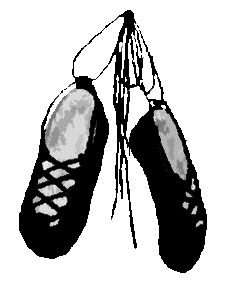




WELCOME TO An Entertainment Site for Scottish Country Dancers - Enjoy the curated selection of theme-related dances for celebrations and holidays, or find a dance associated with a special calendar day, or EVEN your own birthday!

Greek Foot

Greek Foot
Also known as:
Morton's Toe, Flame Foot, Fire Foot



Shoe Recommendations:
(your mileage may vary)
A slightly tapered shoe may be a good choice A slightly tapered shoe may be a good choice to help alleviate pressure on the second toe but one with enough width to accommodate the rest of the toes.

Foot Description - Does This Foot Description Fit?
The Greek foot shape is distinguished by a longer second toe than the rest. It is estimated that approximately 10 to 15 percent of the population have this foot type. The shape was named after the form observed in statues and other Greek antiquities and remained aesthetically popular throughout modern times in sculpture and art. The Statue of Liberty has the Greek foot shape. It has been discovered that this is the most common foot type in Australia, at 43 percent (according to The Australian Women’s Weekly).


Challenges
People with Morton’s Foot will most likely suffer from a wide variety of foot ailments as this foot structure is notoriously unstable. Here is a list of possible afflictions: • Metatarsalgia (ball-of-foot pain) • Morton’s Neuroma • Metatarsal Stress Fractures • Plantar Fasciitis • Calluses • Bunions • Hammer, Claw and Mallet toes

Just for Fun Foot Fortune-Telling
People with a Greek Foot tend to be active, athletic and creative, and are enthusiastic about new ideas and projects. They may have undiscovered talents that reveal themselves only at an older age. They are natural leaders, but can become easily stressed. They also have a tendency to be impulsive.
Most likely to dance a whole program without resting and then do the Petronella!